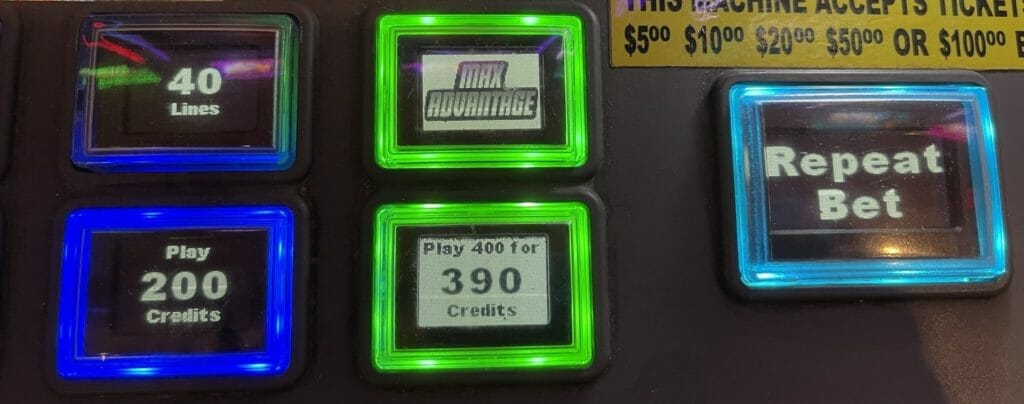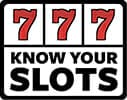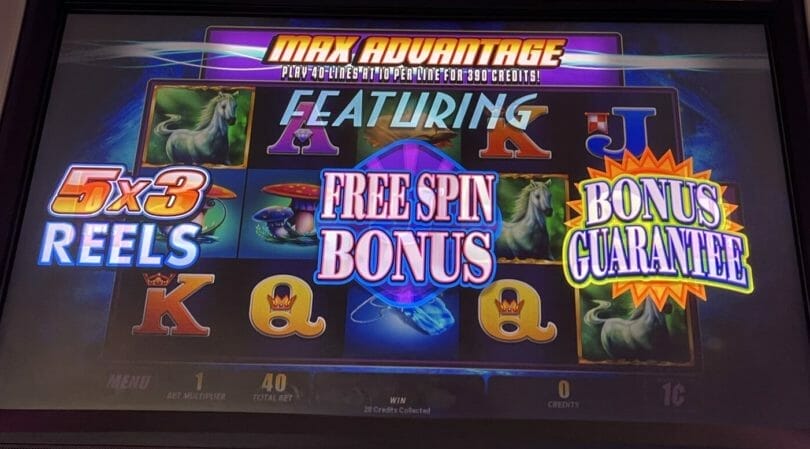Over time I’ve shared a variety of examples of games where you should max bet to get the best payback. Quick Hit machines are one of the more obvious examples. If the game is designed to give you better paybacks at a max bet, then why wouldn’t you want to take advantage of it?
Around a decade ago, WMS took a look at the idea from a different perspective. If players got a slight discount on the max bet wager, but still got the full value for that wager, would players go for it?
Hence the Max Advantage bet was born. On certain machines (I’ve only seen it on machines with a 40 line, penny denomination, $4 max bet wager, but other possibilities could exist), players would get a 10 credit reduction in total cost on a 400 credit max bet wager, so they would only need to pay 390 credits.

This works out to a 2.5% reduction in total cost to get the full value of the bet. In this case, you’re not getting paid more for a higher bet, but instead getting a discount on it. The result is effectively the same – the overall payback will be slightly higher, because the wager compared to the payouts is a bit better.
Unlike Quick Hit or other games like that, the payouts aren’t shifting, so you don’t have a growing progressive that makes more and more sense to play for as they grow. In this way it’s not quite unlike, say, Double Diamond, where you get just a bit more back on that third coin.
I’m not sure why they did this experiment; perhaps 10 years ago a $4 max bet on pennies was seen as aggressive and they wanted to encourage it. Perhaps they were hoping more players would max bet should a scenario exist.
But Max Advantage didn’t carry forward beyond those instances, and my guess is that the casino floor simply evolved away from needing it. There are penny denomination games with a $10 max bet on the floor today, perhaps even more.
Other experiments that started in that same timeframe, like Bonus Guarantee, have lived on a decade later, but the Max Advantage is today an interesting novelty of a previous era.








